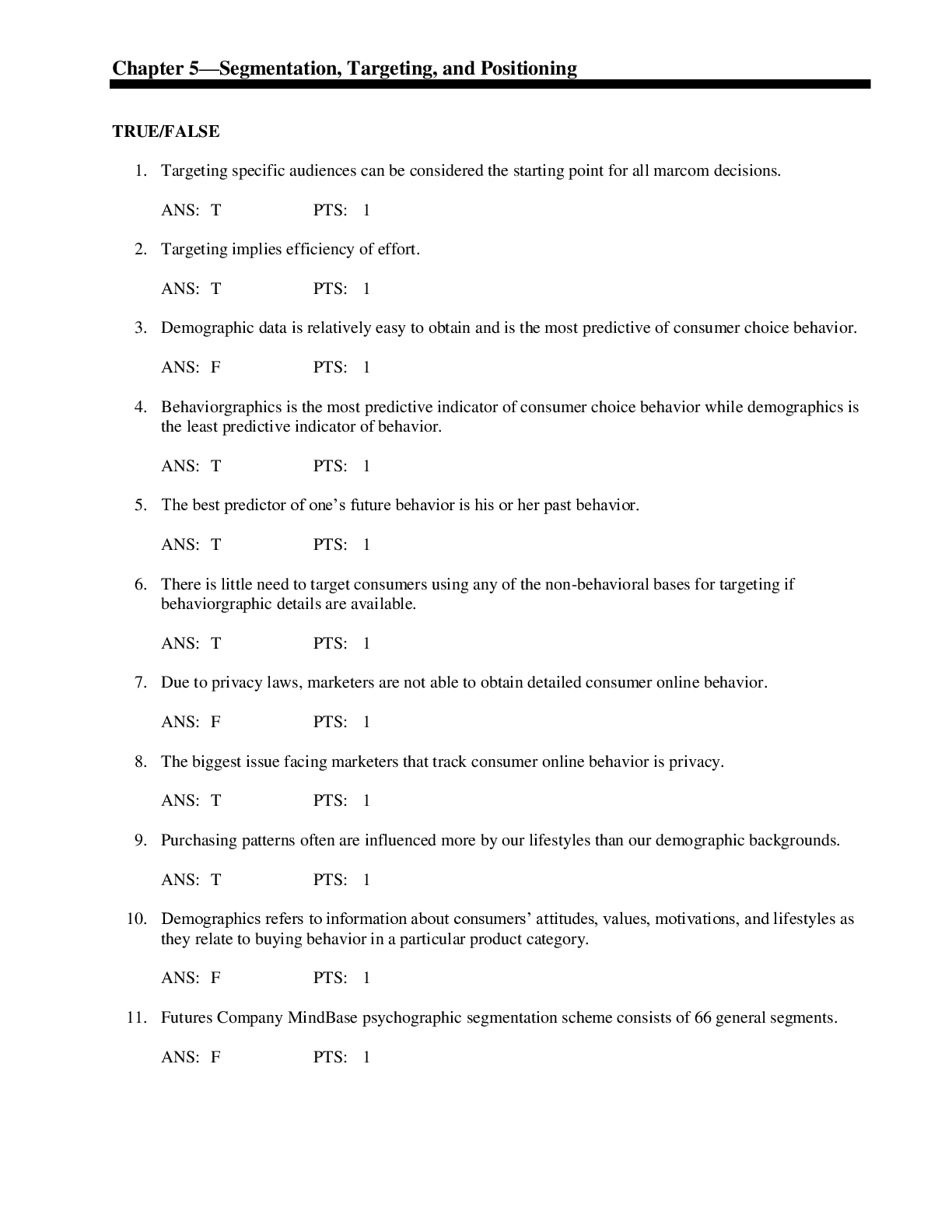Physics > QUESTIONS & ANSWERS > WGU C165 Integrated Physical Sciences Questions And Answers Graded A+ (All)
WGU C165 Integrated Physical Sciences Questions And Answers Graded A+
Document Content and Description Below
Physics - The study of forces, energy, motion Chemistry - The study of atoms and molecules, their structures, and their interactions to form substances Earth science - The study of the Earth's s... tructure and composition, and processes that change Earth essential attributes of science - Studies the natural world Uses testable ideas Relies on data from observations/experiments Presented for evaluation by other scientists Leads to further questions/research variables - The changing quantities in an experiment independent variable - What you change in an experiment on purpose dependent variable - The variable that changes because of an independent variable control variable - The variable(s) you don't want to study, need to be either eliminated or kept constant observational study - When systems are observed as they appear in nature, researchers do not attempt to change them physical model - A model of a physical phenomenon, such as a planetary system conceptual model - A model used to visualize things that cannot be seen, such as atoms mathematical model - A model that treats physical objects/phenomena using mathematical methods computer model - A detailed, complex model calculated by a computer principle of falsification - Principle that only falsifiable statements can be subject to scientific inquiry hypothesis - A testable statement about how something in nature works law - A concise statement that is supported by scientific evidence and repeated experiments, describes a widespread pattern in nature (what) theory - A statement that explains a wide range of observations, supported by a large body of scientific evidence (how/why) meter - Base unit of length kilogram - Base unit of mass second - Base unit of time kelvin - Base unit of temperature Derived units - What is produced when the base units/quantities are combined Speed - The name for the distance traveled divided by an interval of time Volume - Term for the amount of space an object occupies Liquid displacement - Method of determining the volume of an object by measuring the amount of liquid it displaces direct relationship - A relationship between two variables where increasing one increases the other, and vice versa inverse relationship - A relationship between two variables where increasing one decreases the other, and vice versa Velocity - A combination of speed and direction Acceleration - Term for any change in an object's speed and/or direction Force - Term for a push or a pull with direction and magnitude. You may not feel it. Net force - The sum of all forces acting on an object balanced forces - Term for forces that combine to produce a net force of 0 Newton's first law - An object in motion remains in motion unless acted on by a net force inertia - The tenancy to keep the same motion/velocity or remain at rest. Newton's first law [Show More]
Last updated: 2 years ago
Preview 1 out of 10 pages

Buy this document to get the full access instantly
Instant Download Access after purchase
Buy NowInstant download
We Accept:

Reviews( 0 )
$8.00
Can't find what you want? Try our AI powered Search
Document information
Connected school, study & course
About the document
Uploaded On
Dec 29, 2022
Number of pages
10
Written in
Additional information
This document has been written for:
Uploaded
Dec 29, 2022
Downloads
0
Views
67


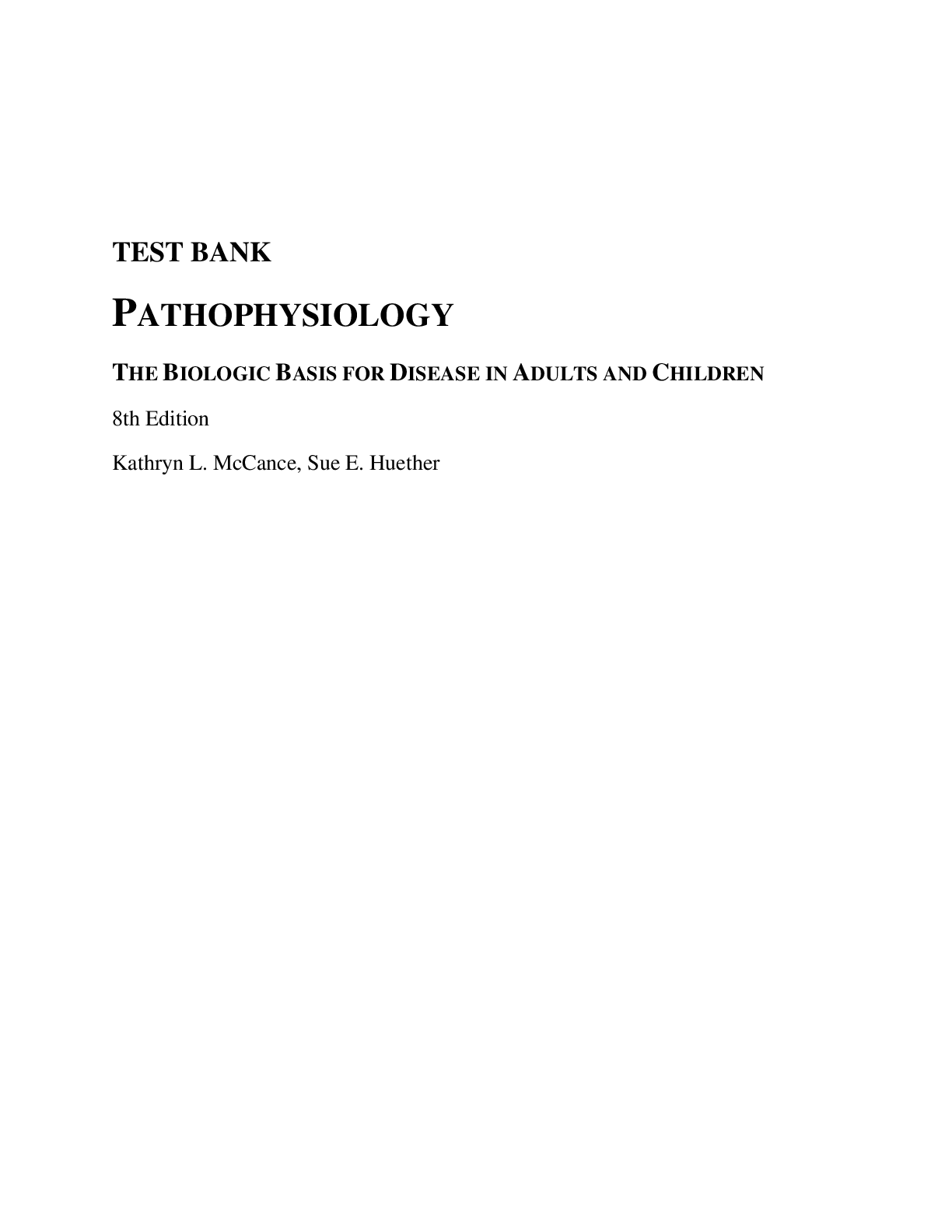

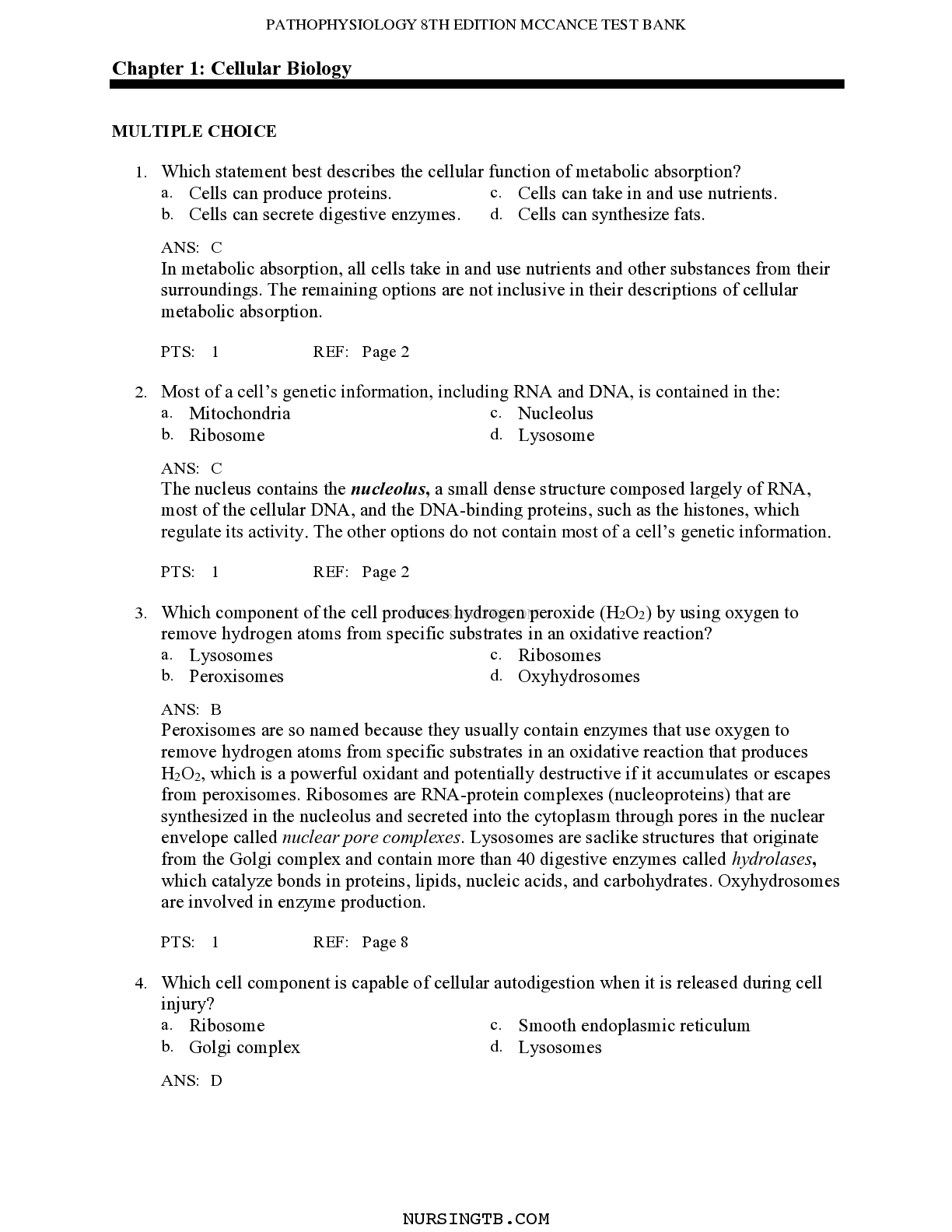
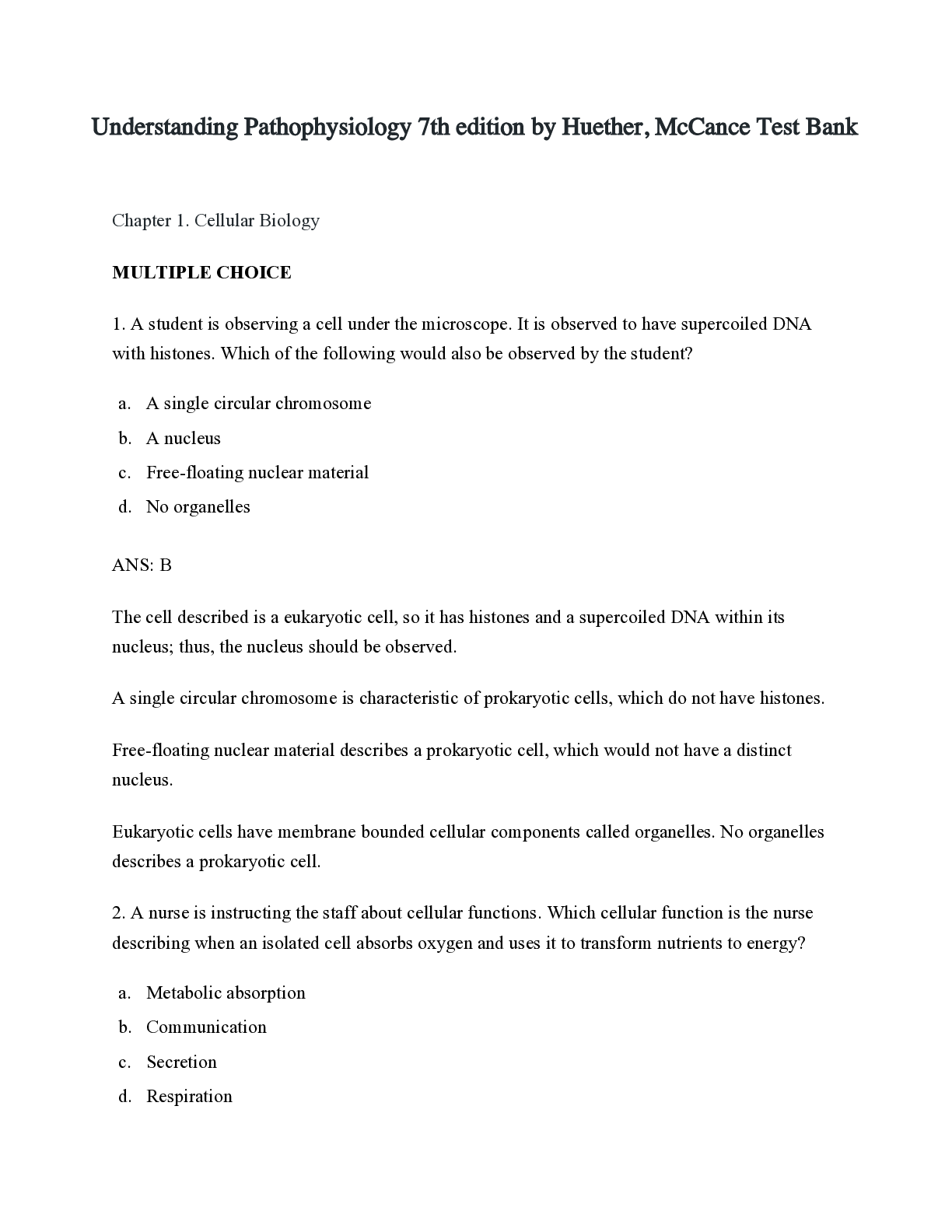



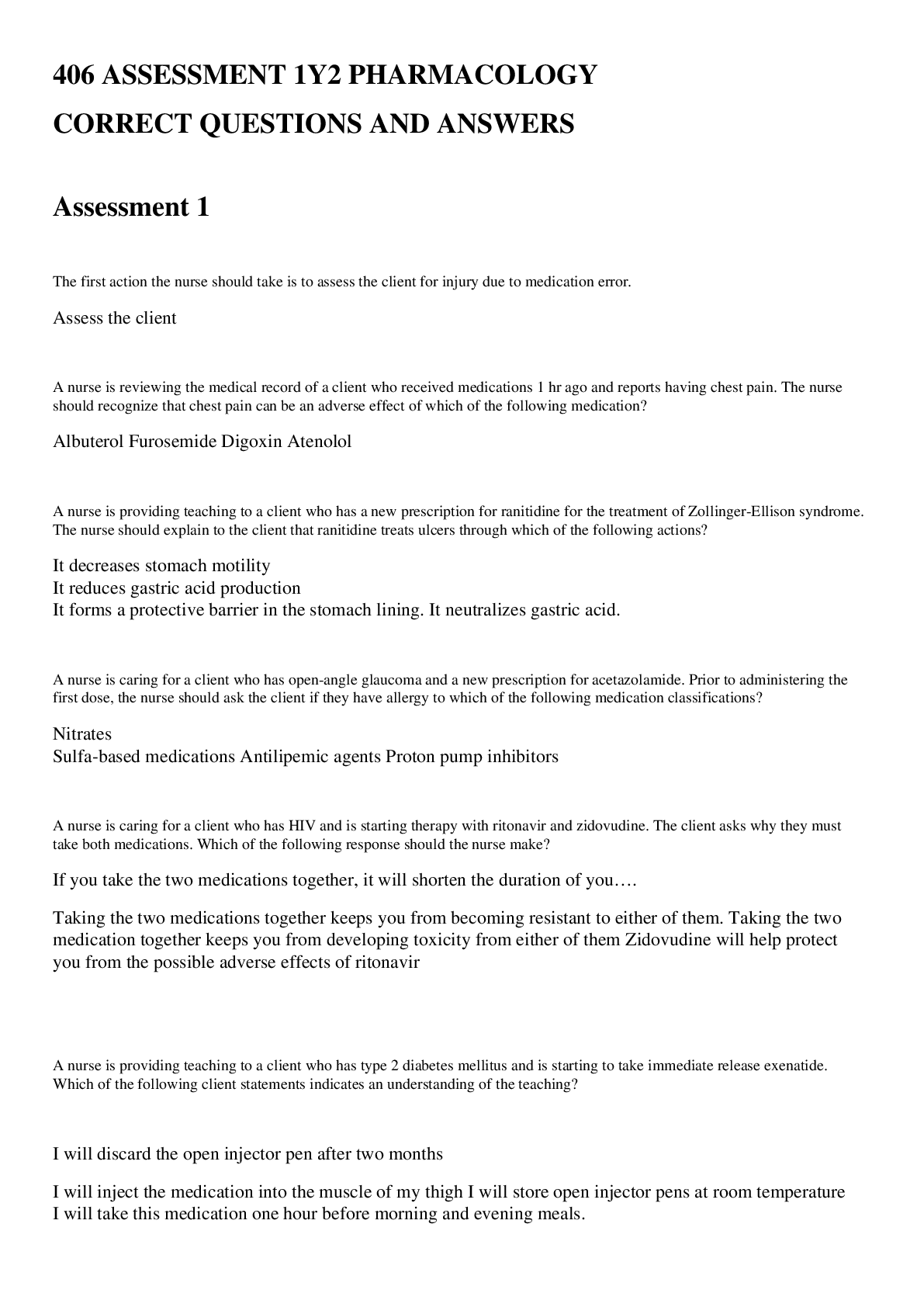
.png)




